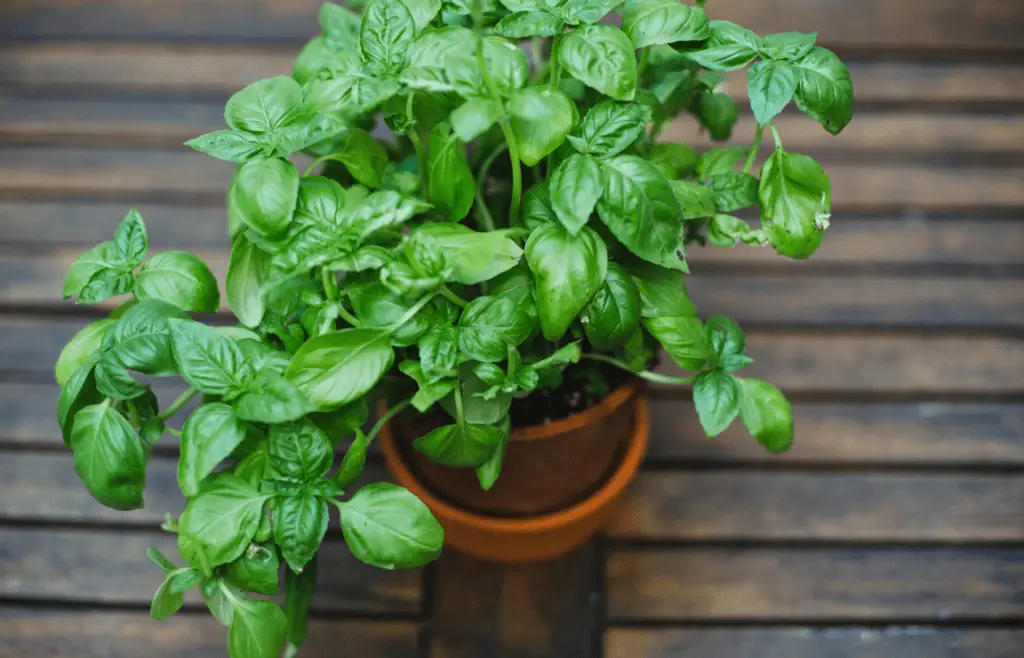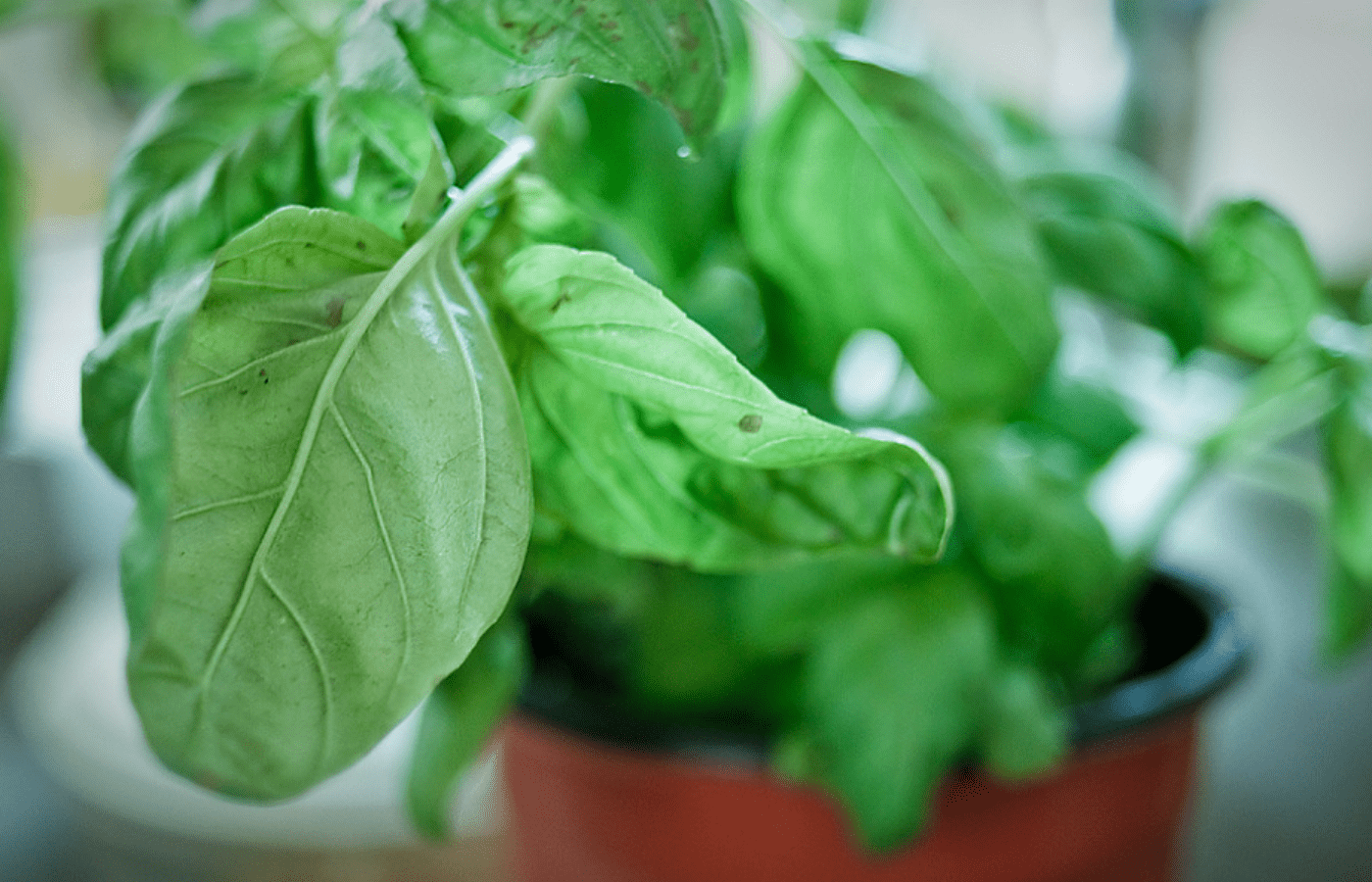Fresh basil is an amazing thing to have in your kitchen, but you only really have two options at the grocery store. If it’s cut, it won’t stay fresh for long and runs out pretty quickly. On the other hand, if you want a constant supply without buying a new batch every week, then you can buy a live plant that you need to keep alive.
To look after a basil plant you need to water regularly without soaking the roots or leaves, provide good amounts of sunlight throughout the day, protect it from the cold and common pests or diseases, harvest at the stem to encourage growth and prevent bolting, and repot when it gets too large.
In this article, we’re going to cover all the details that you need to know so that you will be able to keep a Trader Joe’s basil plant alive for as long as possible – and how to get more delicious leaves out of it too!
Where Should You Place a Basil Plant?

The first thing you need to think about when you bring your basil home from the local Trader Joe’s (or wherever else you might have picked one up) is to decide where it should live.
For most people, indoor space is easier to regulate, but you do need to make sure it is getting enough sunlight.
A basil plant likes to have around 6 to 8 hours of direct sunlight a day, so they do best when they are placed on a south or west-facing windowsill (in the northern hemisphere).
A good tip to encourage more growth is to rotate your basil plant as it gets bigger. You will notice that the leaves and stems that are furthest from the light will grow larger and taller to try and gain more access to the sun, so rotating the plant will share that growth evenly.
How Often Should You Water a Basil Plant?
Watering is perhaps the most important job that you will do to keep your plant alive every week, and it is easy to get this part wrong.
You need to make sure that it is getting enough water to thrive, but you aren’t overwatering either. Too much water can lead to root rot, which will kill the plant, and watering the leaves directly can damage them.
Generally, you should water your basil every 3 or 4 days, adding enough to moisten the soil but not so much that water collects underneath the pot. It can be hard to get this right as the perfect watering frequency depends on how quickly the soil dries out. Check to see whether or not the top inch is fully dry before watering again.
If you have not given the plant enough water it will start to wilt and droop, and the leaves will look much less full. If you are watering too much then it can wilt as well, but some leaves will turn yellow and you might notice a mushy texture at the base of the stem.
The easiest way to tell whether your basil is droopy because of underwatering or overwatering is to feel the soil. If it’s moist, then you’ve watered too much; if it’s dry, then you’ve watered too little.
How to Get the Most Out of a Basil Plant
Buying a basil plant can seem like a bit of a con if you just chop away all the leaves for one recipe and don’t get anything else out of it, but there are ways to keep it giving more and more for a lot longer than you might think.
Harvesting
One of the most important things to learn when caring for your basil plant is how to harvest leaves from it, as you can actually encourage it to grow much bigger and have a lot more leaves if you do this the right way.
When you take leaves, make sure to pinch off a section of the stem as well – above one of the points where two small leaves are growing on either side. These two leaves will then grow into whole new branches of the plant, giving you twice as many leaves the next time you harvest.
It’s a good idea to keep pinching off sections of your basil even when you don’t need to so that it keeps branching out and getting bigger. This will also prevent the plant from “bolting” for as long as possible, which is when it starts flowering and producing seeds.
Soil and Repotting
While the pot and soil that your basil comes in at Trader Joe’s are enough for it the plant to live happily at its current size, it will need repotting as it grows if you want it to get any bigger.
When you repot, choose rich, fertile, and moist soil that has good drainage – and make sure it has been tested for any signs of fungal infection or disease.
How to Keep Basil Safe
If you’re giving your basil all the right light, water, and soil, then it should grow nice and healthily, but there are some things to be aware of that can cause unwanted damage.
Temperature
Basil plants are particularly vulnerable to frost and cold, which is why they are often grown indoors. They aren’t incredibly fussy as long as it is warm, and they are usually perfectly happy at any temperature between 50°F and 80°F.
Humidity
In terms of the air, these plants do prefer things to be a little moist so they are happiest when the humidity is around 60%.
Pests
Pests can be a major problem for basil, even when they are inside. Japanese beetles and slugs are the most common issues for outdoor plants, but aphids are the ones to look out for in the house.
These tiny green insects attach themselves to the undersides of the leaves and suck out the sap, making the leaves sticky and attracting mold. You can use neem oil or safe insecticides, or you can simply spray them away with water or wash them off in the sink.
Diseases
The most common diseases that affect basil plants are fungal, like Leaf Spot, Downy Mildew, and Fusarium Wilt.
Dark patches on the leaves usually indicate Leaf Spot, brown streaks and yellowing leaves can mean that you have a case of Fusarium Wilt, and gray fuzz is often a sign of Downy Mildew.
Keeping good air circulation and clean soil are the best ways to prevent these things from occurring as, unfortunately, they can be hard to treat.
You can use fungicides containing potassium bicarbonate to combat Cercospora Leaf Spot, but a lot of these conditions are untreatable. The only thing to do for many fungal infections and diseases is to remove the affected plant.
Frequently Asked Questions
How Do You Keep Basil Alive in the Fridge?
Basil plants won’t survive inside the fridge as they will not get enough light, however, cut basil can be stored on a paper towel inside of a plastic bag for around one week.
How Long Can You Keep a Basil Plant Alive Indoors?
A basil plant will usually be able to live for between 6 months and one year, under the right conditions. It is possible to keep one alive for longer although it is difficult to stop the plant from bolting and producing seeds, at which point the leaves will become less desirable for cooking.
Final Thoughts
So, how can you keep a basil plant from Trader Joe’s alive? It doesn’t take too much attention, but you need to be doing a few key things.
Make sure to place your plant so that it gets a lot of direct sunlight, water it every 3 or 4 days, keep it safe from the cold, keep pests and diseases away, and repot it as it gets larger.
Also, don’t forget to pinch off the stems so that it grows nice and bushy, with lots of extra leaves!

